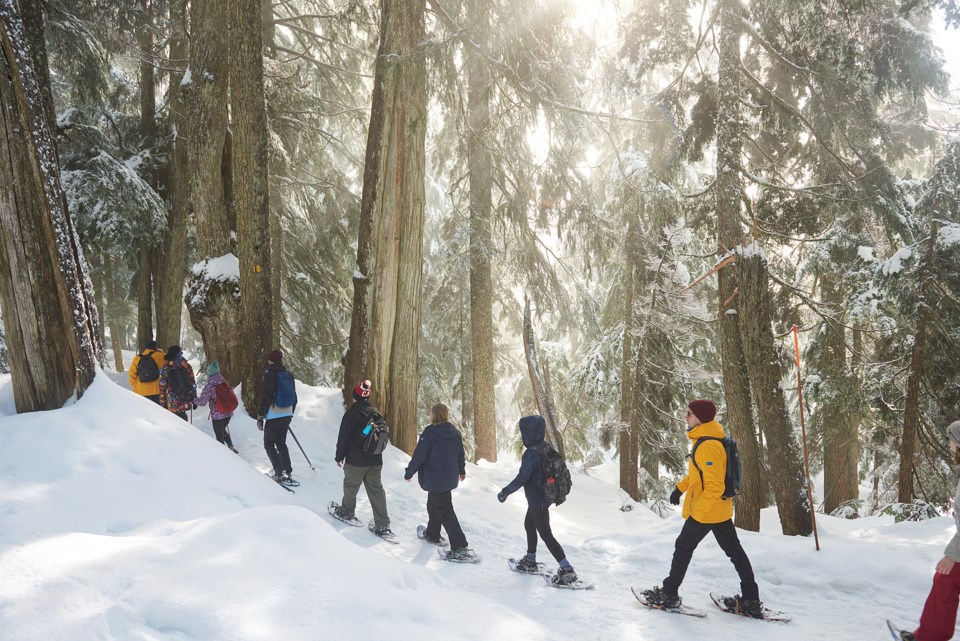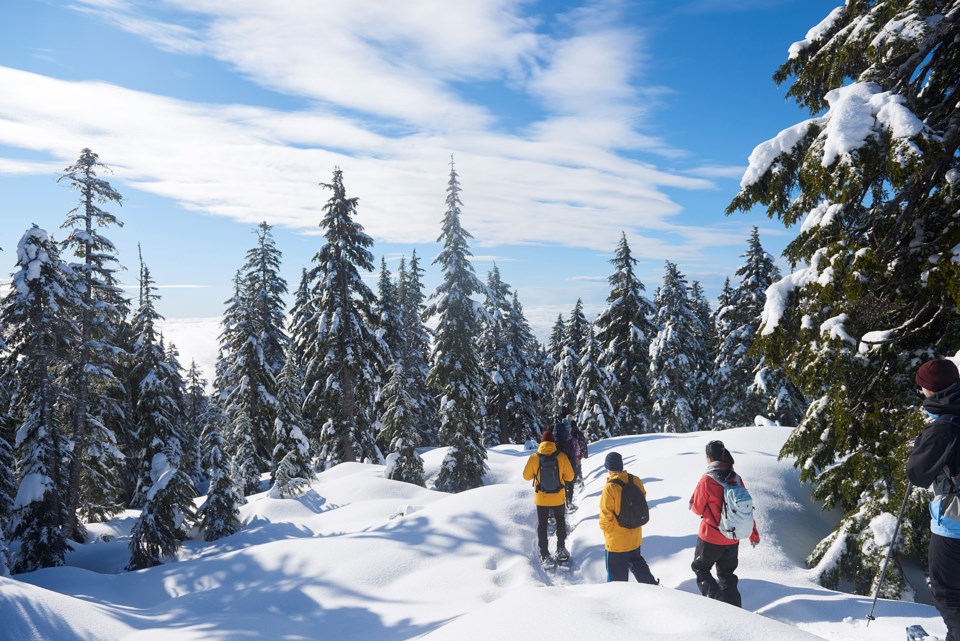As we stride up the steep slope in single file, the only sounds are the creak of snowshoes and the crunch of snow. The carbon steel crampons dig into the hardpack, and our heavy breath billows out as clouds of vapour. Mountain hemlocks tower above us, their branches weighted down with thick dollops of snow. Up here on Mount Seymour, high above the city, winter is alive and well.
Each year, Metro Vancouver’s Water Services department operates watershed snowshoe tours, providing the public with a rare glimpse into where our water comes from.��
A watershed is a drainage basin where rain and snowmelt collects and can be used to supply a community with drinking water.The Metro �鶹��ýӳ��watershed is comprised of three separate catchments: the Capilano, Seymour and Coquitlam, which together cover an area 150 times the size of Stanley Park. These three reservoirs collect the region’s eight metres of annual precipitation and provide more than a billion litres of water each day for Metro Vancouver’s 2.5 million residents.
Today, we’re exploring the Lower Seymour Conservation Reserve, south of the Seymour Falls Dam, which was constructed in 1961 and has the capacity to hold 32 billion litres of water.��Our group includes two guides, several urban planning students, one adventurous senior and a couple dressed in matching snowboard outfits.
We follow the First Lake and Dog Mountain trails, clomping up and over snowdrifts and ducking under branches of Douglas fir, their needles tipped with droplets of water. At the top of a ridge, we stop to catch our breath, and it’s bracingly quiet — a silent stillness we rarely experience in the city.��

All three of the watersheds are usually off-limits to the public, in order to maintain a pristine environment for collecting, filtering and storing our drinking water. This also provides a sanctuary for stands of old-growth forest and many species of animals, including ravens, pine martens, black bears and mountain goats — there’s even a reintroduced population of Roosevelt elk. In some ways, it’s like an ecosystem preserved and frozen in time.
Back in 1927, the Capilano and Seymour watersheds were recognized as essential for Vancouver’s water quality and were leased to the Greater �鶹��ýӳ��Water District (GVWD). The rent is one dollar, per catchment, per year, and the lease is for 999 years.
The first commissioner of the GVWD, Earnest Albert Cleveland — who the Cleveland Dam is named after — made a clear connection between commercial logging in the watershed and diminished water quality, and brought a halt to all logging operations in the area. He reportedly stated, “They will log that watershed over my dead body.”��
After Cleveland passed away in 1952, that’s exactly what they did.
Under the guise of “forest management,” “fire risk reduction” and “improving and protecting the water-yielding characteristics of the land,” the GVWD permitted logging companies to resume harvesting the forests.��
Over the following decades, more than 300 kilometres of logging roads were constructed within the watershed and countless trees were felled. The removal of these trees destabilized the soil, causing silt-filled runoff to empty into the watersheds and slowly decrease the quality of the water. Public outcry eventually motivated the GVWD to conduct an inquiry in 1991, and in 1999, all logging in the watershed was suspended.
Not all B.C. communities are as fortunate as us in this regard. Logging companies are moving into watersheds from the Sunshine Coast to the Kootenays, always seeking out new sources of timber. Residents in Peachland regularly face boil-water advisories, due to landslides caused by deforestation.
�鶹��ýӳ��faced its own boil-water advisory back in November of 2006, when heavy rainfall caused multiple landslides in our watershed. The water from our taps turned brown and murky, and the city was issued with a 12-day boil-water advisory and many supermarkets completely sold out of bottled water.
At our final stop of the snowshoe tour, a dense fog rolls in, turning everything 50 shades of white. A raven swoops through the mist as one of our guides pulls out a thermos and pours us all mugs of steaming hot chocolate. The murky, brown liquid is a stark reminder of the 2006 boil-water advisory, and a contrast to the clean, clear water we often take for granted.
Metro �鶹��ýӳ��operates winter watershed tours each year between February and March and summer tours between July and August. More info at .
��
��



